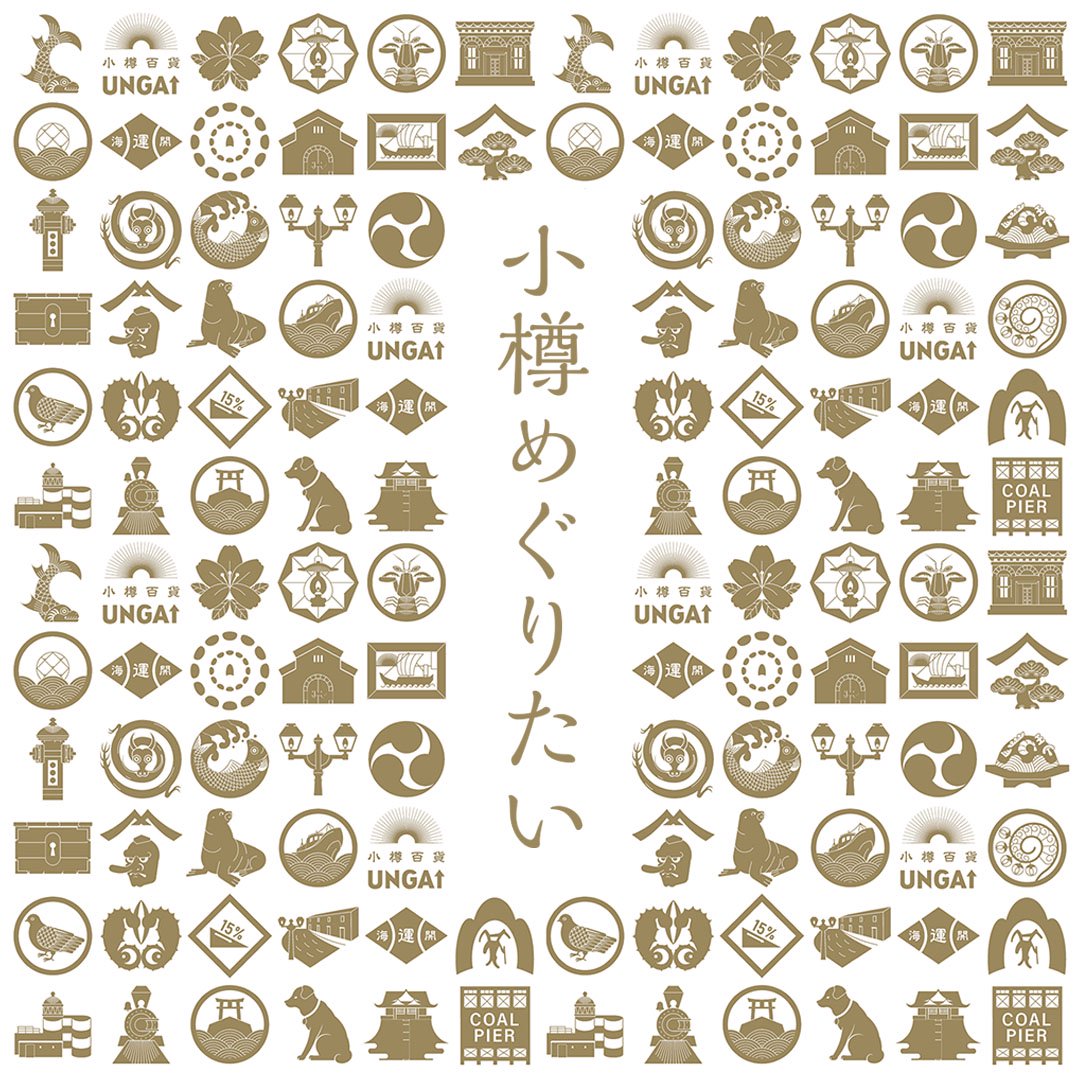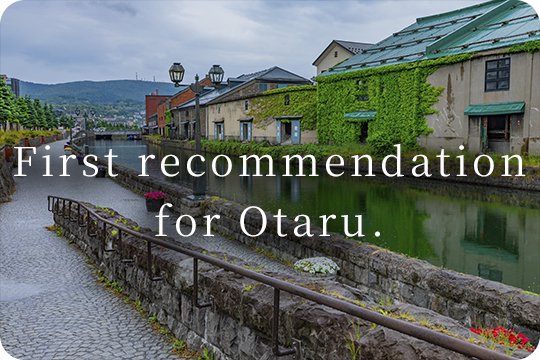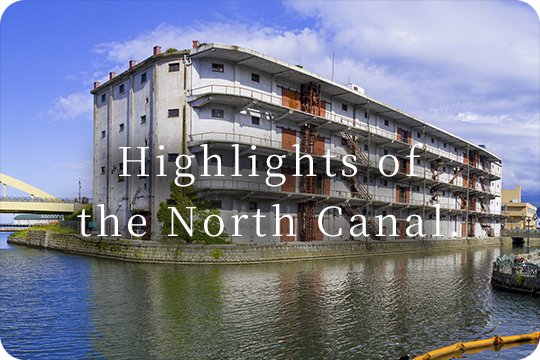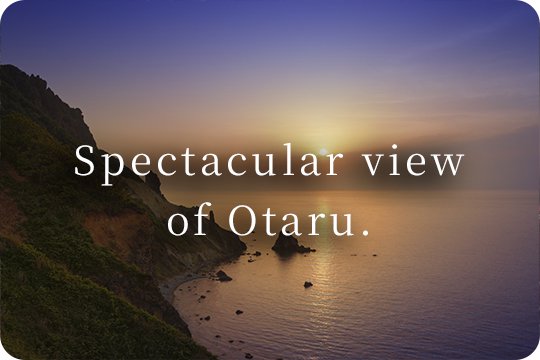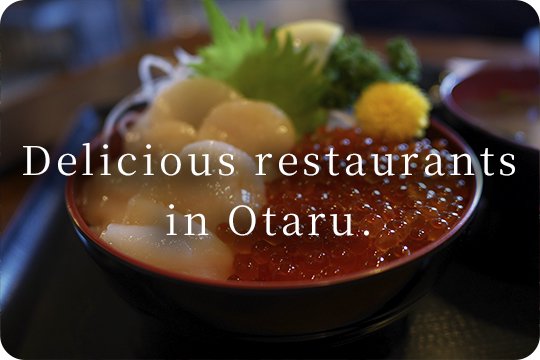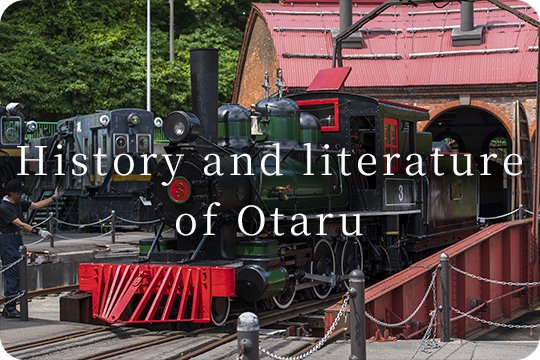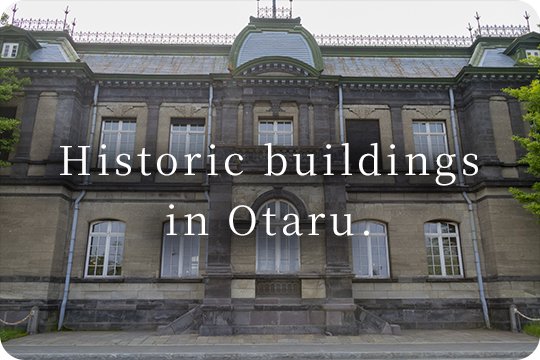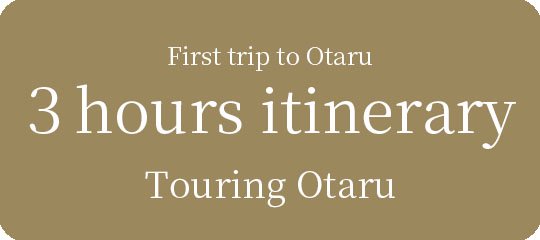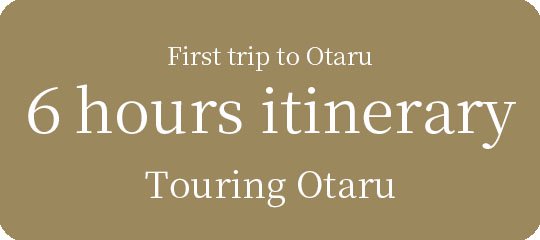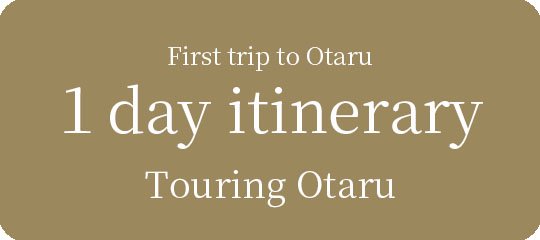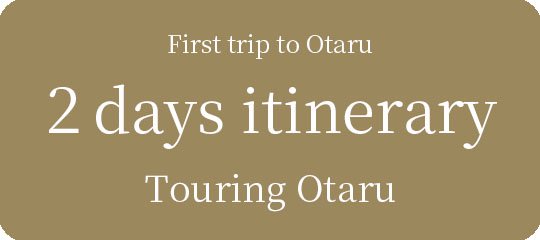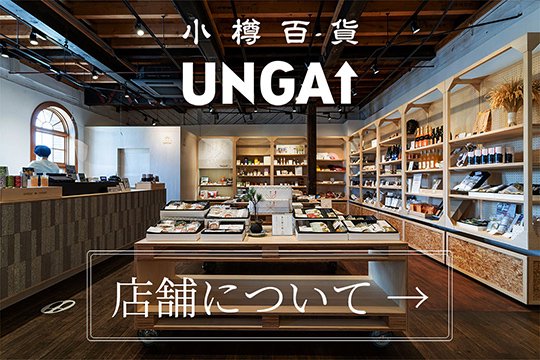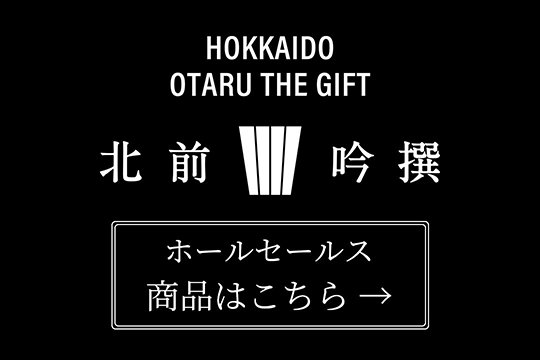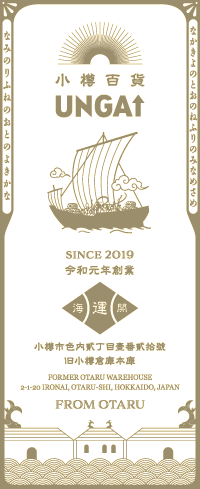Otaru Travel Guide 2024
- The BEST Things to Do in Otaru -
One Day Trip - Itinerary
From the Meiji to Taisho periods, Otaru became a major logistics hub as the gateway to Hokkaido. At that time, Otaru was the most prosperous commercial city in northern Japan. The Otaru Canal, which was reclaimed from the sea during the Taisho Period and made famous nationwide through the Showa Period preservation movement, is one of the most popular tourist attractions in Hokkaido today.
We have picked up recommended spots that you should definitely visit when you come to Otaru from the viewpoint of Otaru Hyakka UNGA��. We have selected the places where Otaru's fortune began, famous sightseeing spots and historic sites, historical buildings, and hidden gems loved by locals, and have classified them into seven categories as "Otaru Meguri-no-Yakitai" or "Otaru Model Courses" for beginners in Otaru.
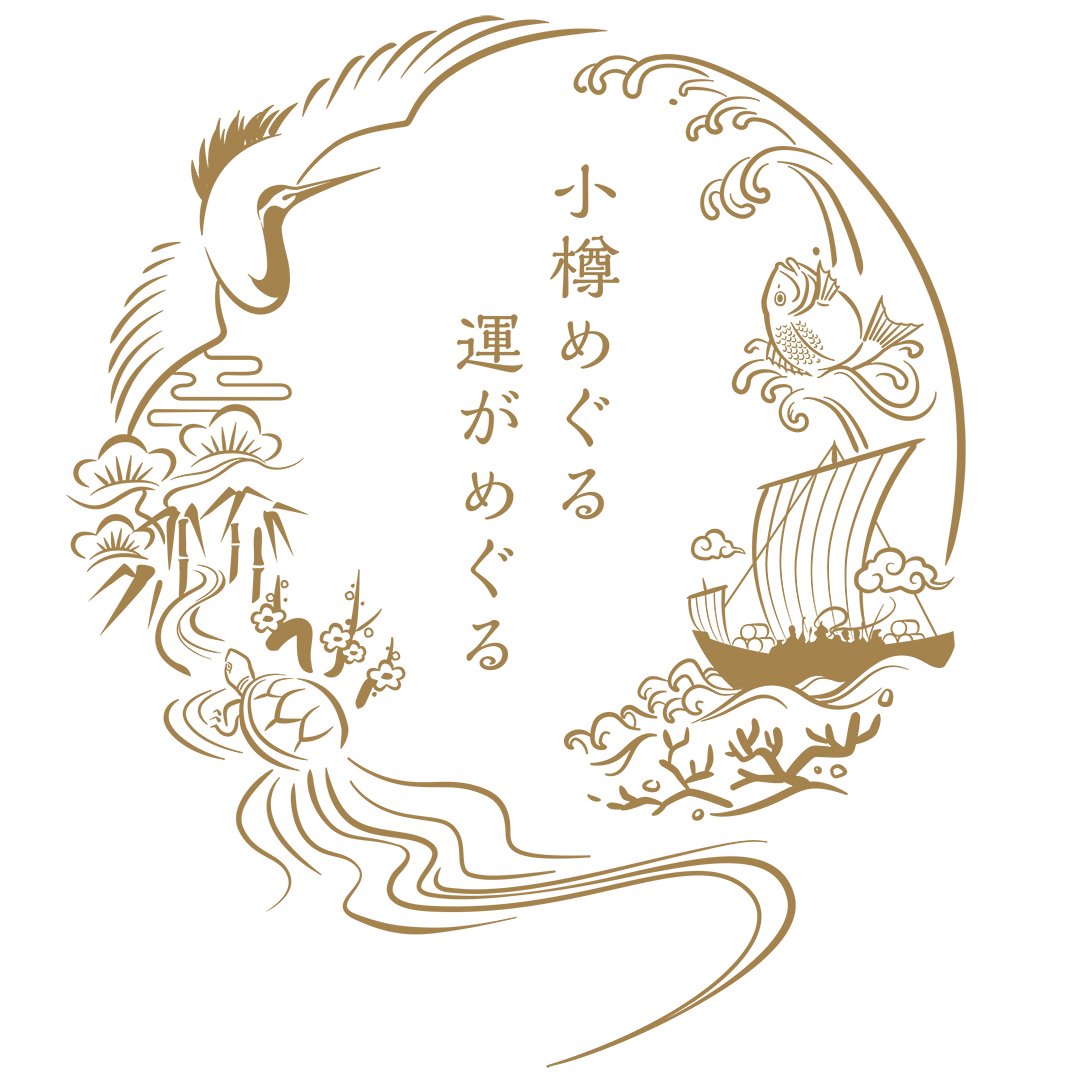
Otaru Department Store UNGA��
We develop and sell original products that convey the charm of Otaru in a storefront that was renovated from the "Old Otaru Warehouse Main Depot," which is said to be the oldest business warehouse in Hokkaido, located in the Otaru North Canal area. The store tells the story of Otaru's prosperity in the pioneer days of Hokkaido and the history of the Kitamaebune, and displays and sells processed seafood and agricultural products from the port of call and Hokkaido, as well as original products made by craftsmen and artists associated with Otaru.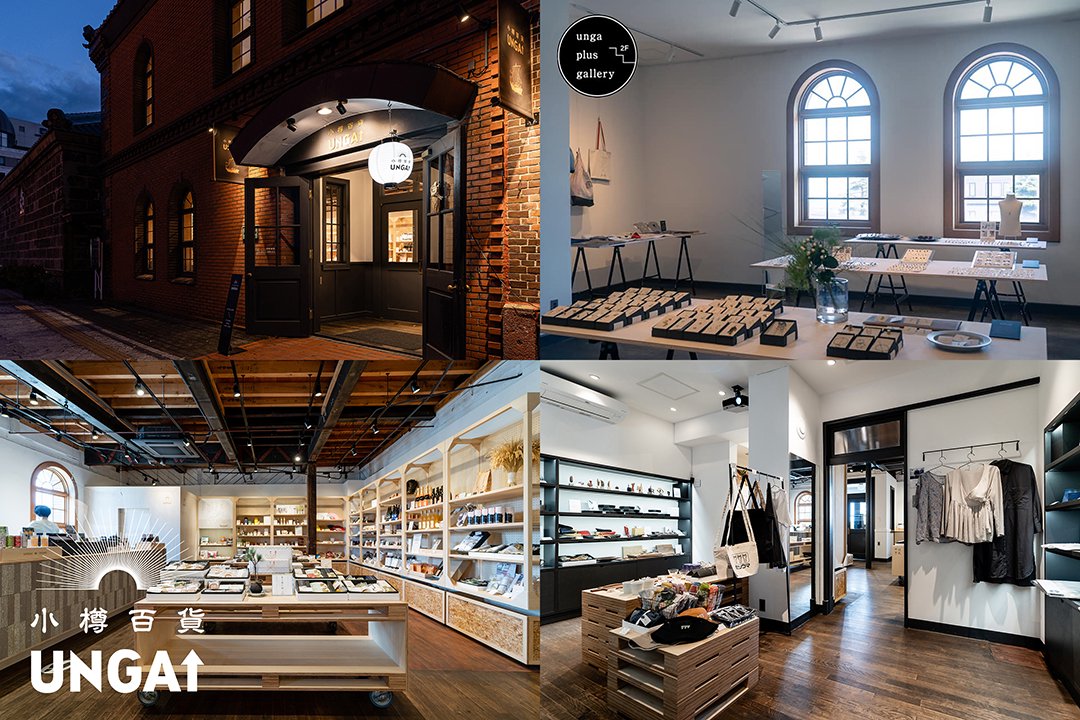
Otaru Travel Recommendations
Recommended for first time travelers
Otaru Recommended Spots��
Otaru Canal
In the late Edo period (1603-1868), people moved to Otaru City when herring fishing became prosperous, and later, during the Meiji and Taisho periods, the city rapidly developed as the gateway to the development of Hokkaido. As a shipping town that distributed various goods through Otaru Port, the volume of cargo handled increased dramatically, so the sea was reclaimed and waterways were built to facilitate efficient transportation. The Otaru Canal was completed in 1923.
Otaru City is now one of the top three tourist destinations in Japan, along with Sapporo and Hakodate, among the most popular tourist destinations in Hokkaido. One of the reasons for Otaru's popularity is that it is relatively easy to visit, only 30 to 40 minutes from Sapporo Station by JR rapid train. The Otaru Canal is the symbol of Otaru City.
▷Click here for more information about Otaru Canal
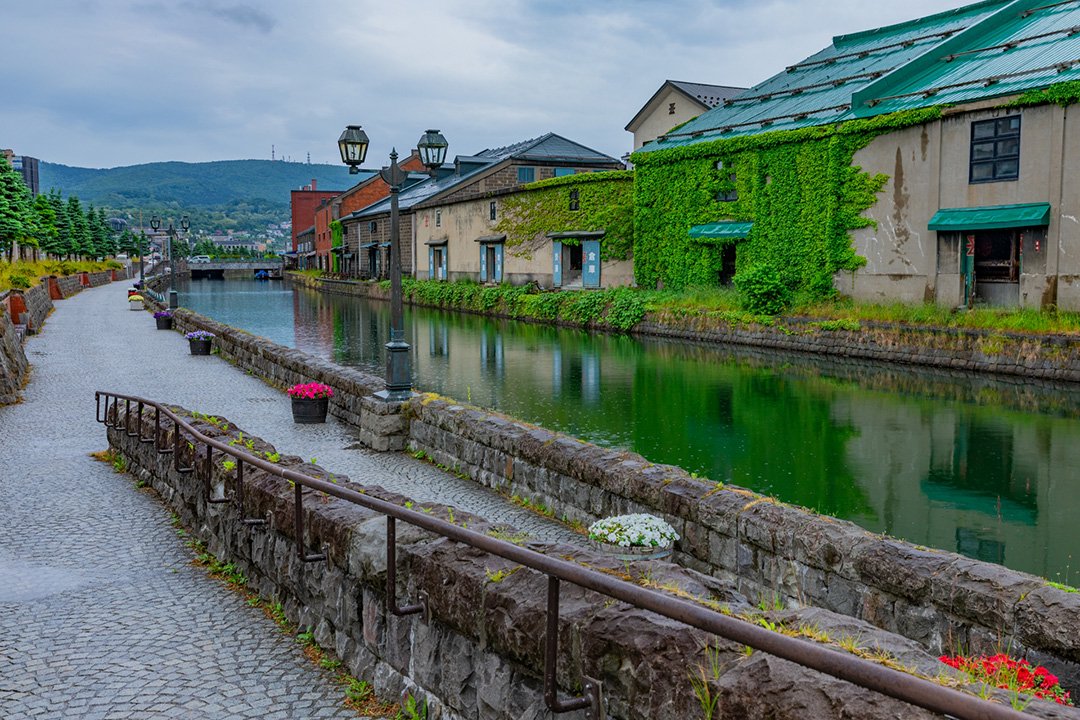 Facility name
Facility nameOtaru Canal
Address
��047-0007��5 Minatomachi, Otaru City, Otaru Canal
Opening hours
Walking is possible throughout the year
Regular closing day
Walking is possible throughout the year
Website
��Click here to visit our website.
Otaru Recommended Spots��
Former Temiya Line
The abandoned ruins of the old Temiya Line, a 10-minute walk from JR Otaru Station, has become a popular tourist spot in Otaru, and during the summer months is filled with young people taking pictures with the tracks in the background. The first railroad in Hokkaido and the third in Japan to transport coal, the line was opened from Temiya to Sapporo in 1881 by an American railroad engineer, Joseph Uley Crawford.
After prospering as a coal and marine products shipper, the line was nationalized in 1906 and served as a means of transportation for the people of the province until the late Showa period (1926-1989), when it was closed down in November 1985.
The key feature is an impressive information board built from old railcars and railroad parts that were used in the past.
▷Click here for more information on Former Temiya Line.
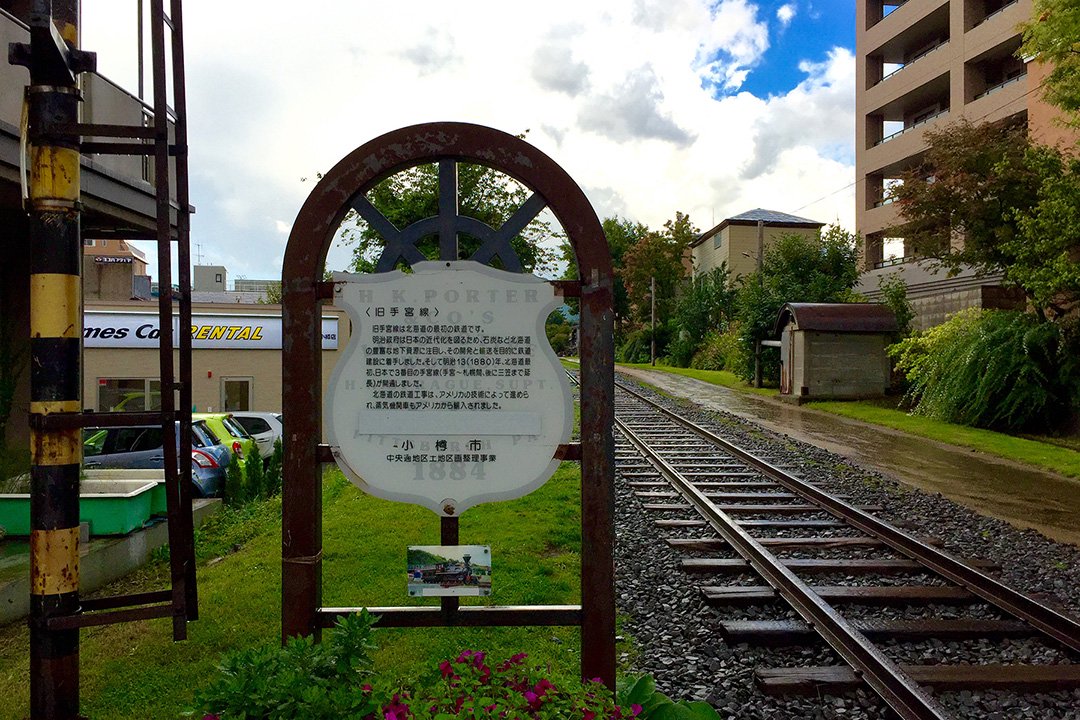 Facility name
Facility nameFormer Japan National Railways Tenmiya Line
Opening hours
Walking is possible throughout the day except in winter when there is snowfall.
Regular closing day
Walking is possible throughout the day except in winter when there is snowfall.
Otaru Recommended Spots��
Otaru Sakaimachi Street
When it comes to sightseeing in Otaru, the Sakaimachi Shopping Street is the second most popular spot after the Otaru Canal. It is a must-visit place when you come to Otaru. Kitaichi Glass, which is famous nationwide, Lutao Cakes, Otaru Music Box Store, Kamaei, etc. line Sakaicho Street, and it is always crowded with tourists and tour groups seeking souvenirs, lunch, gourmet foods, and sweets.
There are sushi restaurants, restaurants, and other eateries, many of which are housed in historical buildings, and the streets are romantic with an emotional atmosphere that is different from that of Tokyo, Osaka, or Kyoto. Glass-making workshops lining the streets of the shopping arcade are popular, as are elaborate events held throughout the shopping arcade. The Sakai-cho Shopping Street Map, which lists the stores that are members of the shopping street, is useful. It can be downloaded from the official website.
▷Click here for more information on Otaru Sakaimachi Street
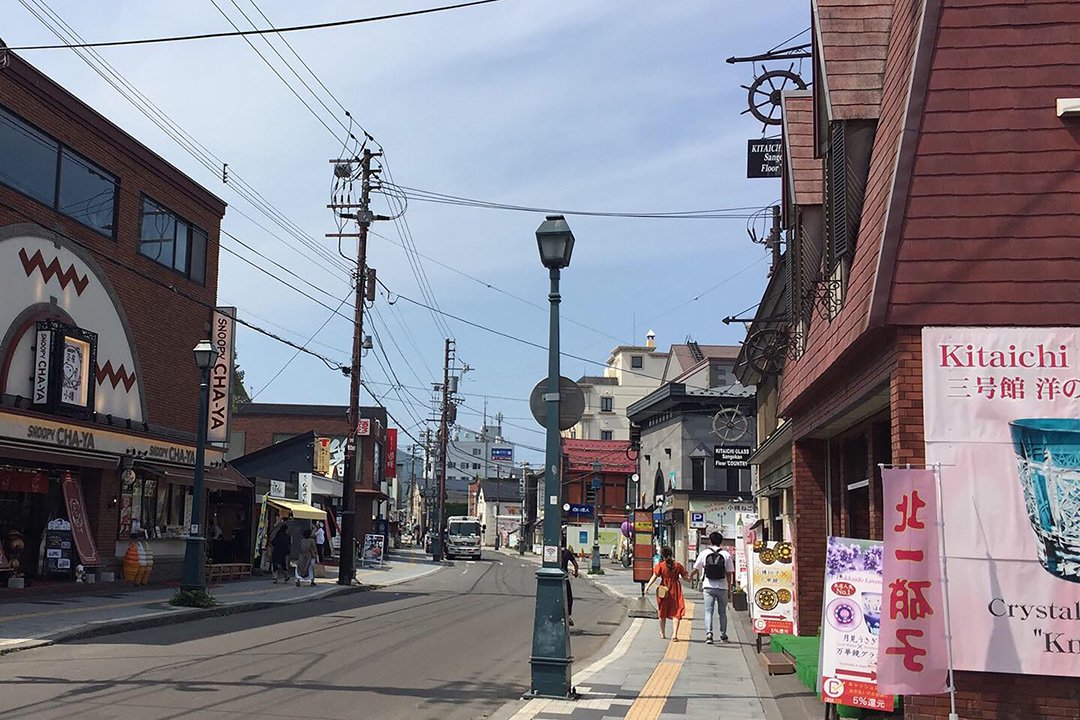 Facility name
Facility nameOtaru Sakaimachi Street
Address
��047-0027 6-1, Sakaimachi, Otaru City
Phone
0134-27-1133
Opening hours
09��00��18��00
Regular closing day
without a holiday
Website
��Click here to visit our website.
Otaru Recommended Spots��
Otaru Canal Cruise
The Otaru Canal has become world-famous as a sightseeing spot in Hokkaido. The many historical buildings along the canal are picturesque no matter where you cut them off.
The "Otaru Canal Cruise" is an activity experience that allows you to enjoy the popular Otaru Canal area to the fullest, and can be called the new standard for Otaru sightseeing. It is a small boat trip of about 40 minutes that allows you to enjoy the charm of Otaru, a town of history and romance, and rediscover the atmosphere of the good old days.
▷Click here for more information on Otaru Canal Cruise
 Facility name
Facility nameOtaru Canal Cruise
Adress
��047-0007 5-4, Minato-cho, Otaru, Hokkaido
Phone
0134-31-1733
Opening hours
10��30��20��00
Regular closing day
Open all year round (subject to change due to Corona. Check website for details)
Website
��Click here to visit our website.
Otaru Recommended Spots��
Otaru City Museum Canal Pavilion
The Otaru City Museum has two facilities: the Main Museum Building and the Canal Pavilion; the two facilities are about a 20-minute walk apart. The Main Museum was newly opened in July 2007 (Heisei 19), integrating the functions of the Museum and the Youth Science and Technology Museum in the former Otaru Transportation Memorial Hall located in Temiya. At the same time, the former museum, located in the "Former Otaru Warehouse" along the Otaru Canal, was renamed the Unga-kan.
The Canal Hall, which used to be a museum, has two exhibition halls: the first exhibits old photographs and maps documenting the Kitamae Ship, the herring fishery, and the changes in the town, and the second exhibits natural materials on plants and animals, allowing visitors to learn about the history of Otaru City and its blessed nature in an easy-to-understand manner. There is no charge for junior high school students and younger.
▷Click here for more information on Otaru City Museum Canal Pavilion
 Facility name
Facility nameOtaru City Museum Canal Pavilion
Address
1-20, Shikouchi 2-chome, Otaru-shi, Hokkaido 047-0031, Japan
Phone
0134-22-1258
Opening hours
09��30��17��00
Regular closing day
Year-end and New Year's Eve (December 29 to January 3)
Website
��Click here to visit our website.
Otaru Recommended Spots��
Otaru Department Store UNGA��
From Otaru, the city of shipping, comes good fortune...
The uninterrupted and protected flow is on our side.
May your luck open up too.
Otaru flourished as the gateway to the development of Hokkaido during the Meiji period.
Kitamae-bune ships flapped their pure white sails on the ocean, bringing many goods and culture to this area through traffic to and from Honshu.
Otaru Department Store UNGA�� offers original products carrying the history and culture that still remain in Otaru, as well as good products from the port of call of the Kitamae Ship, from the former Otaru warehouse, the first business warehouse in Hokkaido built by the Kitamae Ship owners, Sonzaemon Nishide and Shohachi Nishitani.
The story of Otaru, which lived together with the Kitamae Senpaku, is told from this location.
We look forward to serving you with an assortment of original items that can only be found here and that will be appreciated as souvenirs.
▷Click here for more information on Otaru Department Store UNGA��
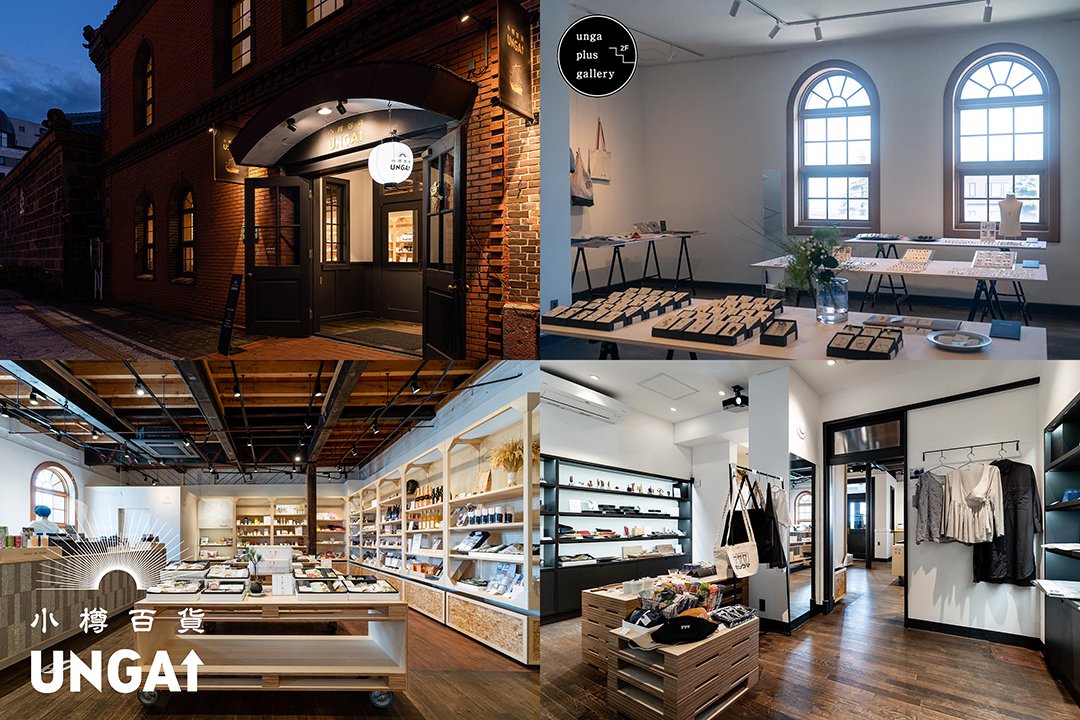 Facility name
Facility nameOtaru Department Store UNGA��
Adress
��047-0027��2-1-20 Shikinai, Otaru-shi, Hokkaido
Phone
0134-65-8150
Opening hours
11��00��18��00
Regular closing day
without a holiday
Website
��Click here to visit our website.
Recommendations for Otaru Repeat travelers
Recommendations spot for Otaru Repeaters��
Otaru Tengu Mountain
Otaru Tenguyama has long been familiar to citizens as a symbol of Otaru.
It is 532 meters above sea level and can be seen from all parts of central Otaru City.
The summit can be reached by ropeway, which connects at intervals of about 6 to 12 minutes, or by car (closed during the winter season). It is also possible to reach the base of the ropeway by public transportation bus.
Otaru Tengu has five observatories, and the summit observatory in particular has been awarded a star in the "Michelin Green Guide Japon" and is a spot not to be missed. The sumptuous view from the café at the top of the mountain is so spectacular that you will want to spend hours admiring it. The night view has been selected as one of the three best night views in Hokkaido.
▷Click here for more information on Otaru Tengu Mountain
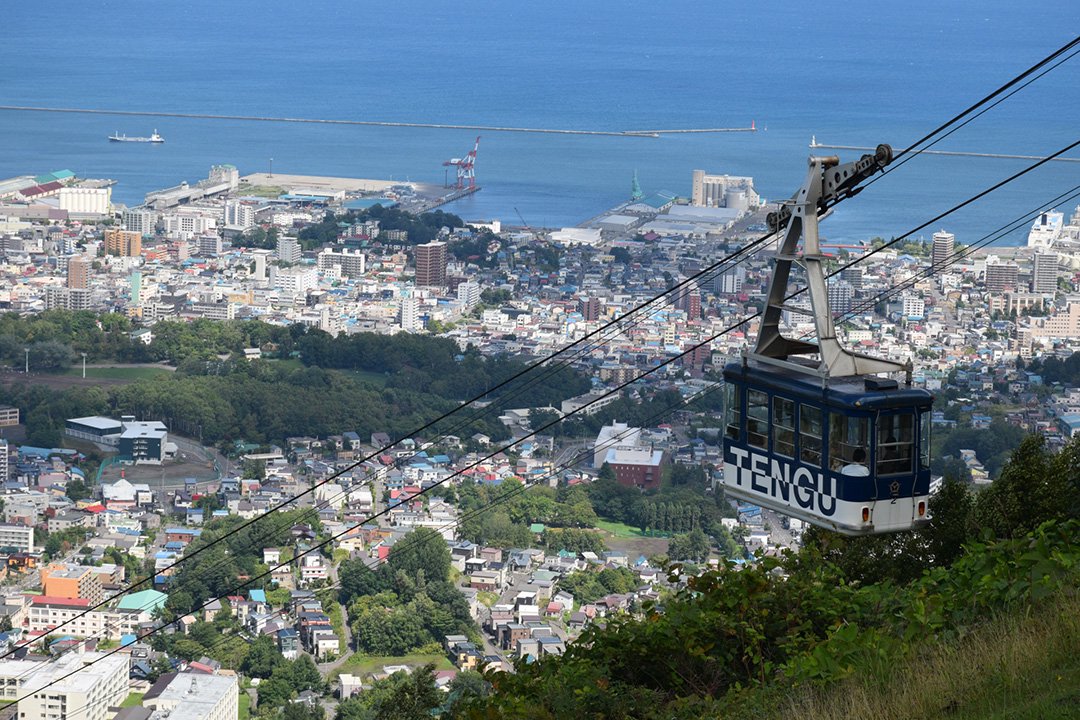 Facility name
Facility nameOtaru Tengu Mountain Ropeway and Ski Area
Address
��047-0023��2-16-15 Mogami, Otaru City, Hokkaido
phone
0134-33-7381
Opening Hours
Subject to change depending on the season
Regular closing day
Subject to change depending on the season
Website
��Click here to visit our website.
Recommendations spot for Otaru Repeaters��
Tanaka sake Brewing Kikkogura Brewery
At its peak, Otaru had more than 50 sake breweries, but today only Tanaka Sake Brewery, which makes Otaru's local sake "Takaragawa," remains. Tanaka Sake Brewery has been in business for 120 years, since 1899, and has two stores in the city, which have long been popular with the public.
Kikkogura, which has become a tourist attraction in Otaru, is a group of former Okazaki warehouses, a one- and two-story wooden frame stone structure consisting of Buildings 1-3, built in 1905, and designated as a "historical building" by Otaru City. Tours of the Kikkogura are free of charge, but reservations should be made in advance for groups of 10 or more people.
▷Click here for more information on Tanaka sake Brewing Kikkogura Brewery
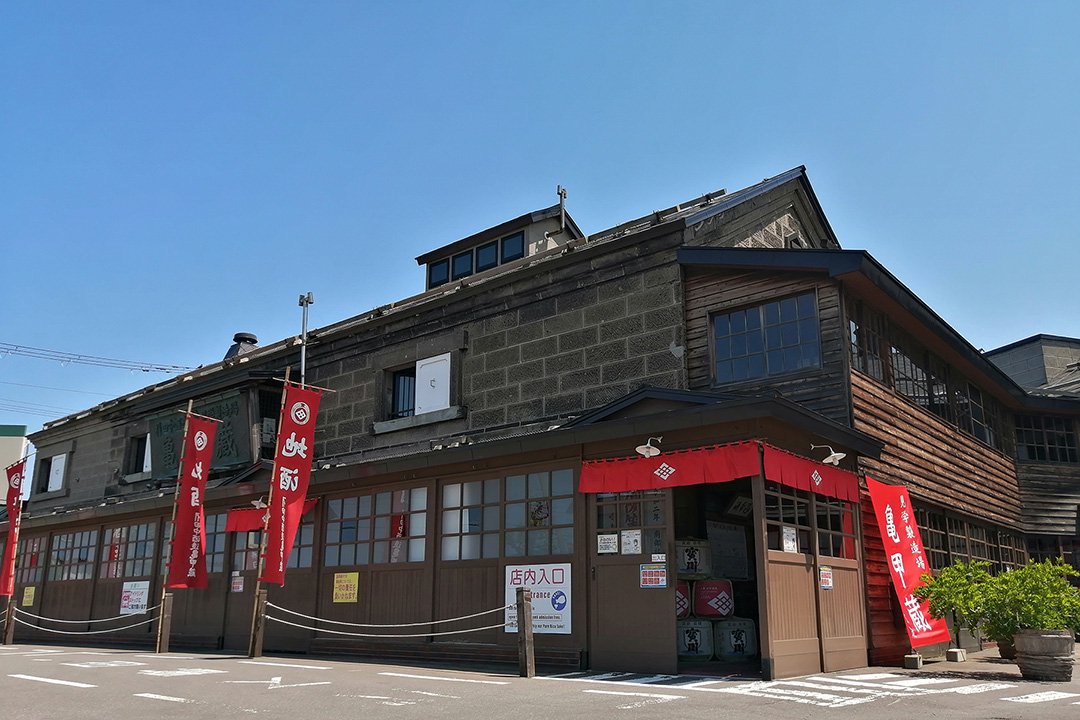 Facility name
Facility nameTanaka sake Brewing Kikkogura Brewery
Address
��047-0016��2-2, Nobukacho, Otaru City, Hokkaido
Phone
0134-21-2390
Opening hours
09��05��17��55
Regular closing day
None
Website
��Click here to visit our website.
Recommendations spot for Otaru Repeaters��
Otaru Aquarium
Located in the Niseko-Shakotan-Otaru Kaigan National Park facing the Sea of Japan, Otaru Aquarium was built in July 1958 as a "marine venue" for the Hokkaido Grand Exposition, and started operation the following year in 1959 as Otaru City Aquarium. It is located in Shukuzu, about 15 minutes by car from the Otaru Canal, a famous sightseeing spot. You can also take a leisurely ride on an ocean sightseeing boat departing from Otaru Port Pier No. 3.
The museum facilities consist of four areas: the "Main Building," which exhibits a wide variety of fish and shellfish; the "Dolphin Stadium," where dolphin and otter shows are held for the whole family to enjoy; the "Marine Animal Park," where seals, walruses, sea lions, and penguins are kept; and the amusement park "Otaru Shukuzu Marine Land." Visitors can always observe up close the ecology of over 250 species of marine animals and fish.
Parking is 800 yen for regular cars and 600 yen for small cars, and can accommodate approximately 1,000 vehicles.
▷Click here for more information on Otaru Aquarium
 Facility name
Facility nameOtaru Aquarium
Address
3-303 Shukuzu, Otaru-shi, Hokkaido 047-0047, Japan
Opening hours
summer season09:00~17:00
winter season10:00~16:00
Regular closing day
Please check website
Website
��Click here to visit our website.
Recommendations spot for Otaru Repeaters��
Former Otaru Branch of NYK Line Ltd.
The former Otaru branch of NYK, with its opulent appearance, evokes the prosperity of Otaru during the Meiji period. It was built in October 1906 by Nippon Yusen Kabushiki Kaisha (NYK Line), which is still the core company of the Mitsubishi Group. As one of the three major shipping companies in Japan, it is well known overseas and is still called the representative of Japanese marine transportation.
At that time, Otaru was expanding its commercial port function to Europe as the base of the national Hokkaido development project. At the same time, financial institutions and trading companies were active in Otaru, which was called the "Wall Street of the North," and many buildings were constructed by top architects that showcased the best of their skills.
This building symbolizes the heyday of Otaru's development. The interior of the guest room, a two-story stone building in the European Renaissance style, is extravagant and luxurious, with a plaster ceiling, chandeliers, deep red curtains, a parquet floor, an impressive carpet with a large floral pattern, and walls covered in gold-embossed leather paper with a chrysanthemum pattern that was said to have taken great effort to restore.
▷Click here for more information on Former Otaru Branch of NYK Line Ltd.
 Facility name
Facility nameFormer Otaru Branch of NYK Line Ltd.
Address
��047-0031 3-7-8 Ironai, Otaru-shi, Hokkaido
Phone
0134-22-3316
Opening hours
Closed until June 2024 for conservation and repair work.
Regular closing day
Closed until June 2024 for conservation and repair work.
Website
��Click here to visit our website.
Recommendations spot for Otaru Repeaters��
Otaru Nishin Goten
In the first half of the Meiji period, the main industry in Hokkaido was herring fishing, which produced a larger amount of herring than the coal mining industry, which later became a major industry.
From the early Meiji period, set-net fishing operators built unique buildings that served both as dormitories for many fishermen and as residences for the fishermen's bosses (masters).
In particular, the fishermen who fished in areas isolated from the village built huge buildings.
The Tanaka family of Tomari-mura on the Shakotan Peninsula also built their main house in 1897.
In Nishi-Shakotan, where cliffs continue to rise, there developed a shelter-like inlet called Fukurokoma, where herring were stored with nets.
▷Click here for more information on Otaru Nishin Goten
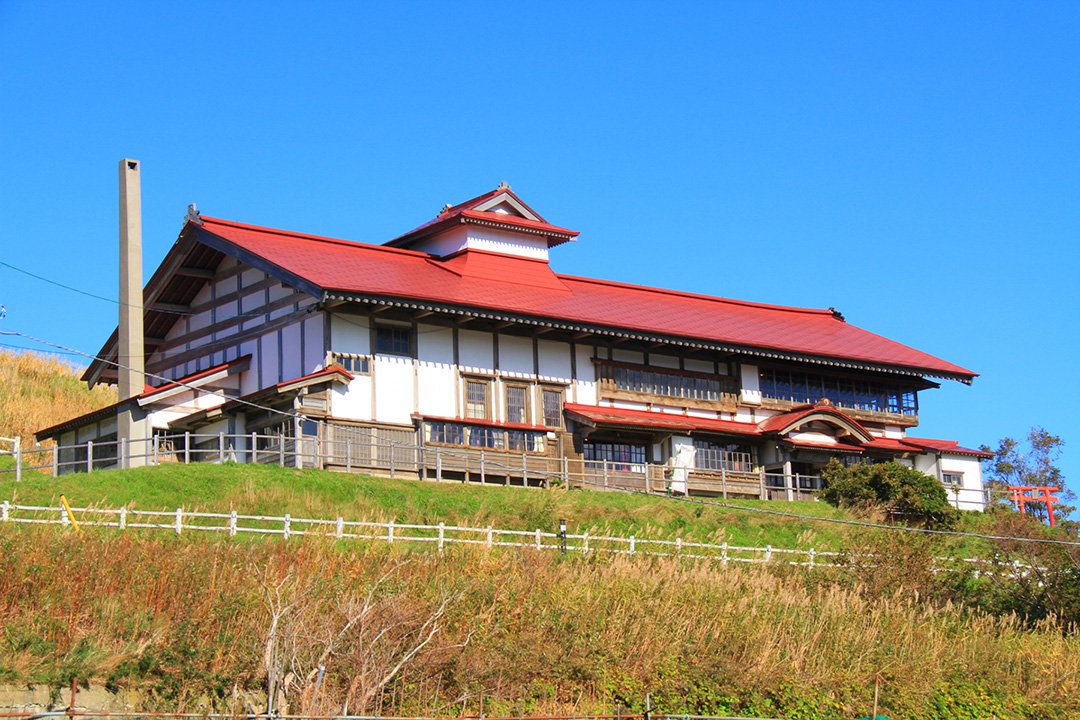 Facility name
Facility nameOtaru Nishin Goten
Address
��047-0047��3-228 Shukutsu, Otaru City, Hokkaido
Phone
0134-22-1038
Opening hours
9:00~17:00 (closing hours may change depending on the season)
Regular closing day
Winter holidays
Website
��Click here to visit our website.
Otaru's unknown and recommended tourist spots
Otaru's unknown and recommended tourist spots��
Hanazono area ��Retro drinking district��
Hanazono District, located in the middle of JR Otaru Station and Minami Otaru Station, has long flourished as the center of Otaru City along with the neighboring Inaho District and other areas.
National Route 5 crosses the center of Hanazono District, and the mountain side across the national highway is the area where the city hall, fire department, and other public offices are located. On the ocean side is the Hanazono Ginza shopping district, lined with old-fashioned coffee shops, sushi restaurants, and Chinese restaurants, and turning down an alleyway, you will find a tight line of small snack bars and drinking establishments. The maze of streets is a deep entertainment district with the flavor of a movie set in the Showa period.
▷Click here for more information on Hanazono area
 Facility name
Facility nameHanazono area ��Retro drinking district��
Address
��047-0024 Hanazono, Otaru City, Hokkaido
Website
��Click here to visit our website.
Otaru's unknown and recommended tourist spots��
Hokkai Seikan Otaru Factory No.3 Warehouse
Hokkai Can Otaru Factory Warehouse No. 3 was built in 1924, the year after the Otaru Canal was completed. It was built as a warehouse to store cans for canning salmon and trout manufactured for seafood processing plants on the Kamchatka Peninsula, where the North Sea fishing industry was thriving.
▷Click here for more information on Hokkai Seikan Otaru Factory No.3 Warehouse
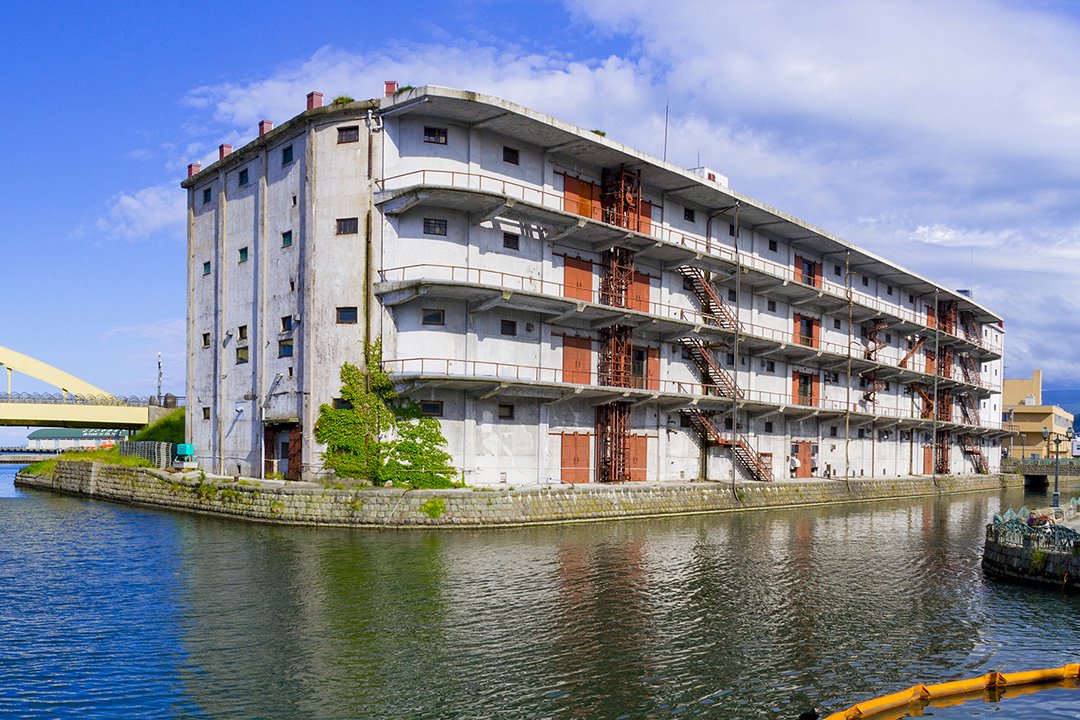 Facility name
Facility nameHokkai Seikan Otaru Factory No.3 Warehouse
Address
2-5, Temiya, Otaru-shi, Hokkaido 047-0041, Japan
Opening hours
It is possible to see the exterior all year round.
Regular closing day
It is possible to see the exterior all year round.
Website
��Click here to visit our website.
Otaru's unknown and recommended tourist spots��
Otaru City Noh Theater
The Otaru City Noh Theater (former Okazaki Family Noh Stage) was built in Otaru City, Hokkaido in 1926 for Noh performances.It is a building of high historical and cultural value, with the highest standards of dignity for a Noh stage established in the Edo period.
Ken Okazaki, a native of Sado who was a successful grain merchant and a city councilor who contributed to Otaru City, built this shrine in his residence in 1926.The wood used for the structure includes 2.4-meter diameter Jindai cedar from Sado Island, Japanese cypress from Kyushu, and pine from Hokkaido. The pine tree on the mirror panel and the bamboo at the cut door were painted by Mochinobu Kano, the 17th head of the Kano School, who spent a total of two months in Otaru.
Since its opening in 1926, the theater has hosted many distinguished guests (Princess Takamatsu, tTokugawa Ietatsu, chairman of the House of Peers), the head of the Soke school, and Noguchi Kanesuke of Yugen Noh, among others, and has hosted many important events. However, after Okazaki's death, the building was donated to Otaru City in 1954 in accordance with his dying wish.
▷Click here for more information on Otaru City Noh Theater
 Facility name
Facility nameOtaru City Noh Theater��Former Okazaki Family Noh Stage��
Address
��047-0024��Otaru City Public Hall, 5-2-1 Hanazono, Otaru City
Phone
0134-22-2796
Opening hours
Open to the public from June to early September
Website
��Click here to visit our website.
Otaru's unknown and recommended tourist spots��
Sumiyoshi Shrine
Sumiyoshi Shrine, located an 8-minute walk from Minami-Otaru Station, was founded in 1868. The shrine was originally built in 1865 when Shigeken Kikuchi, a Shinto priest of Hakodate Hachimangu Shrine, invited Sumiyoshi-no-mikoto to the shrine as the general guardian of "Wotarunai" and "Takashima. In 1881, the shrine was rebuilt at the present location, and has been in existence for 150 years.
Today, Otaru Sumiyoshi Shrine is the chief Shinto shrine of Otaru, and is always mentioned when talking about shrines in Otaru.
The three deities are the "three Sumiyoshi deities" Sokoatsutsu no Mikami, Nakaatsutsu no Mikami, and Omototsutsu no Mikami and Okinagatarashi-hime no Mikoto. According to the Chronicles of Japan and the Kojiki, these deities were born from the water that flowed down from Izanagi's body when he purified himself.
▷Click here for more information on Sumiyoshi Shrine
 Facility name
Facility nameSumiyoshi Shrine
Address
2-5 Suminoe, Otaru-shi, Hokkaido 047-0014, Japan
Phone
0134-23-0785
Opening hours
24hours
Website
��Click here to visit our website.
Otaru's unknown and recommended tourist spots��
Night view of Otaru
Otaru is known for its beautiful nightscape, with the night view from Mount Tengu being one of the three most beautiful nightscapes in Hokkaido. The night view from Mt. Tengu, which is compact and beautiful due to the close proximity of the sea, the city, and the mountains, is a fascinating sight from any direction.
▷Click here for more information on Night view of Otaru
 Facility name
Facility nameOtaru Tengu Mountain��Mount Kenashi View Point��Suitengu Shrine��Hiraiso Park��Asahi Observation Deck��Temiya Park
Opening hours
24 hours
Regular closing day
Open all-year-round
More in-depth Otaru attractions
More in-depth Otaru attractions��
Oshoro Circular Stone
The stone circle, a 33m long x 22m wide oval shaped stone circle of various sizes, is located on a small river terrace in the western part of Otaru City. The stones were placed on a flat surface after the gentle slope at an elevation of 20 m was cut down and filled with gravel. It is a valuable site where visitors can see the remains of the ancient people's large-scale civil engineering work.
▷Click here for more information on Oshoro Circular Stone
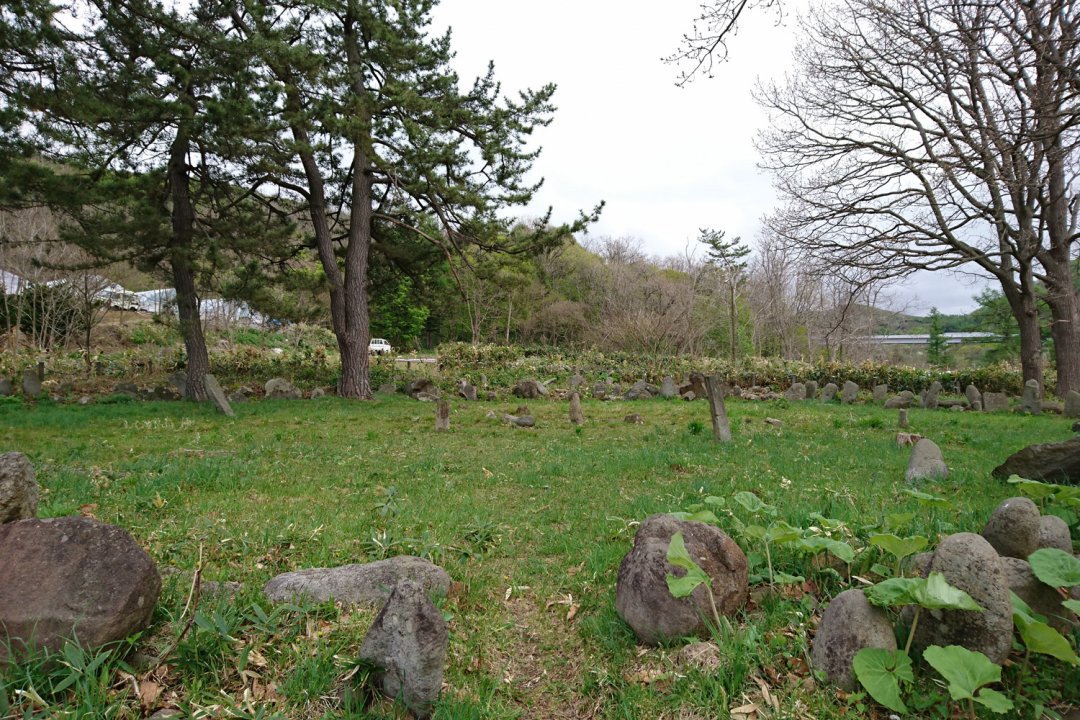 Facility name
Facility nameOshoro Circular Stone
Address
��048-2561��2 Oshoro, Otaru City, Hokkaido
Phone
Otaru Museum��0134-33-2523
Opening hours
free to observe
Regular closing day
free to observe
Website
��Click here to visit our website.
More in-depth Otaru attractions��
Otaru Temiya cave
About 1,600 years ago, the Jomon Period had already ended in the main island of Japan, and the Yayoi and Kofun Periods were underway. In Hokkaido, however, the hunting and gathering lifestyle known as the "Zokujomon Period" was still in full swing. The wall sculptures in Temiya Cave are valuable carvings made by the people of that period.
▷Click here for more information on Otaru Temiya cave
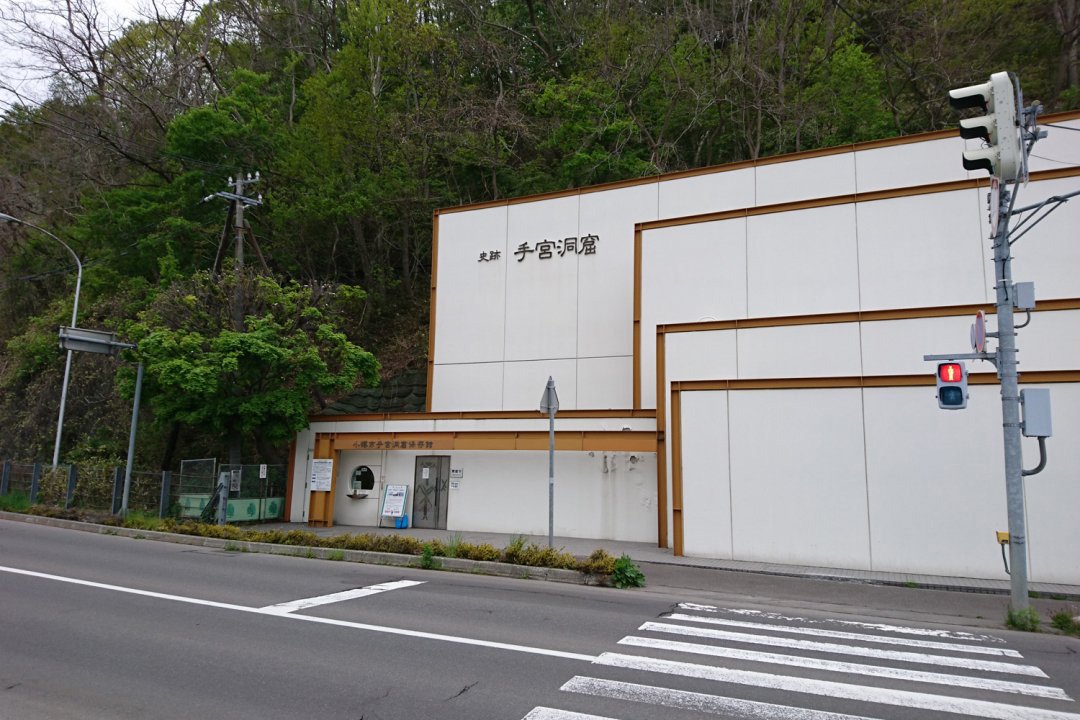 Facility name
Facility nameOtaru Temiya cave
Address
��047-0041��1-3-4, Temiya, Otaru City
Phone
0134-24-1092��0134-33-2523��Otaru City Museum Main Building��
Opening hours
9:30��17:00
Regular closing day
Tuesday
Website
��Click here to visit our website.
More in-depth Otaru attractions��
Northernmost point of the Otaru Canal
Many historical buildings and stone warehouses from the Meiji era, such as the former Otaru branch of the NYK Line and the former Shibusawa Warehouse, can be found on the North Canal, which has retained its ancient appearance. There are also many reminders of the old Otaru, such as gas lamps and the Hokkai Can Otaru factory. Unlike the busy Otaru Canal area, which is becoming more and more of a tourist destination, this quiet area retains the atmosphere of the old port town.
▷Click here for more information on Northernmost point of the Otaru Canal
 Facility name
Facility nameNorthernmost point of the Otaru Canal
Address
��047-0031 3, Ironai, Otaru, Hokkaido
Website
��Click here to visit our website.
More in-depth Otaru attractions��
Mt. Akaiwa
Mt. Akaiwa, located in the northwestern part of Otaru City, looks like a hill when seen from the city, but when seen from the sea on a sightseeing boat cruising along the Omotai Coast, the rugged appearance of a forest of strange reddish-brown rocks and peaks rising from zero meters above sea level is overwhelmingly powerful. It is also one of the best rock-climbing areas in Hokkaido, and many climbers are climbing on the rocks.
▷Click here for more information on Mt. Akaiwa
 Facility name
Facility nameMt. Akaiwa
Opening hours
24 hours
Regular closing day
Open all-year-round
Website
��Click here to visit our website.
More in-depth Otaru attractions��
Otamoi Coastline
Otamoi Coast, included in the Niseko-Shakotan-Otaru Kaigan National Park, which became the third place in Hokkaido to be designated as a national monument in 1963, is located in the northern part of Otaru.
It is an unexplored spot where visitors can take a sightseeing boat to see the magnificent and breathtaking scenery of cliffs and strange rocks in the clear blue Shakotan blue sea from the sea side.The mysterious-sounding name "Otamoi" comes from the Ainu word meaning "sandy cove. It is currently the only place name in katakana in Otaru.
▷Click here for more information on Otamoi Coastline
 Facility name
Facility nameOtamoi Coastline
Opening hours
Tourist boat operation must be confirmed.
Regular closing day
Tourist boat operation must be confirmed.
Website
��Click here to visit our website.
Otaru Travel Guide Category List


Otaru Seasonal Events


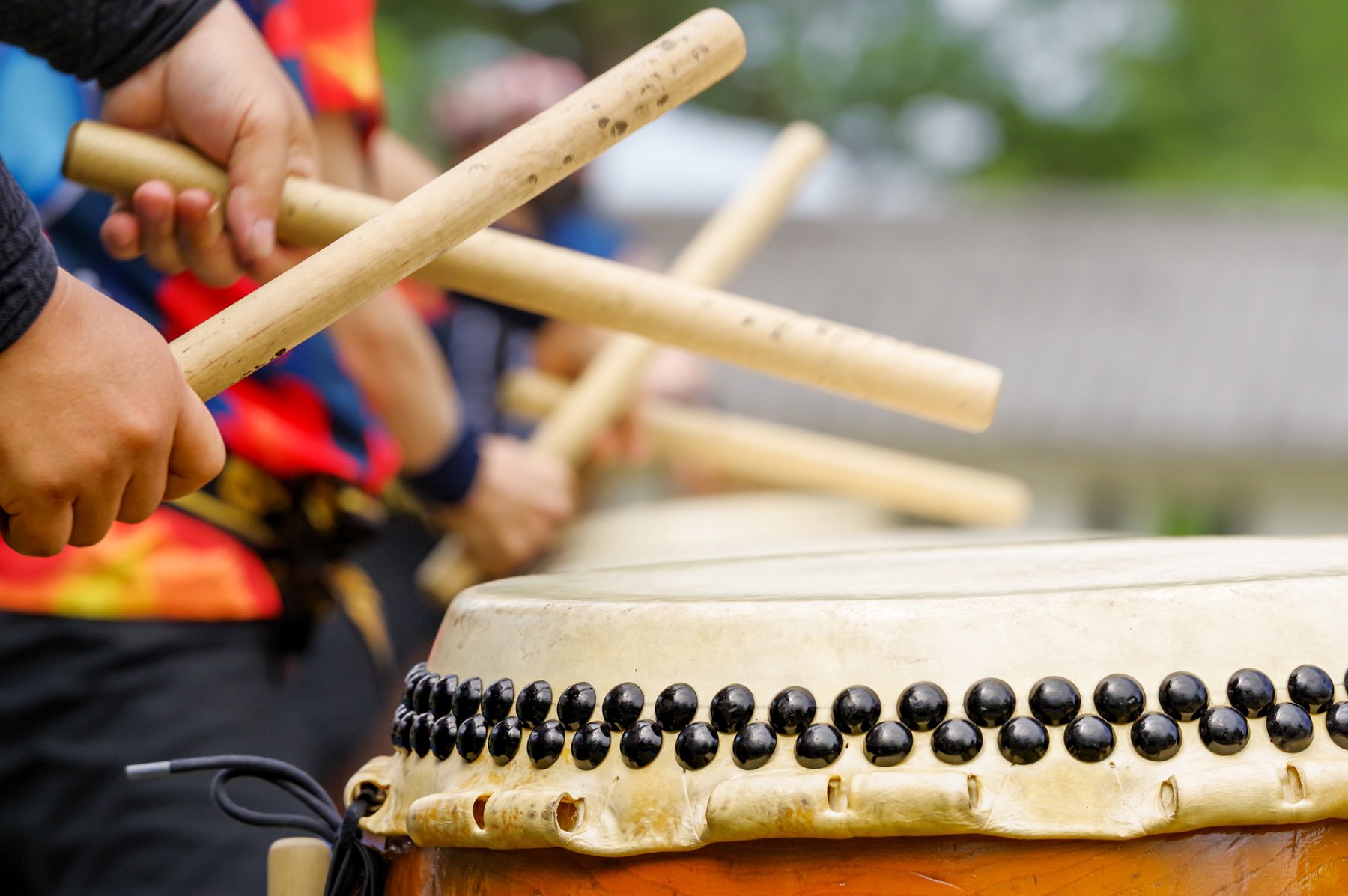
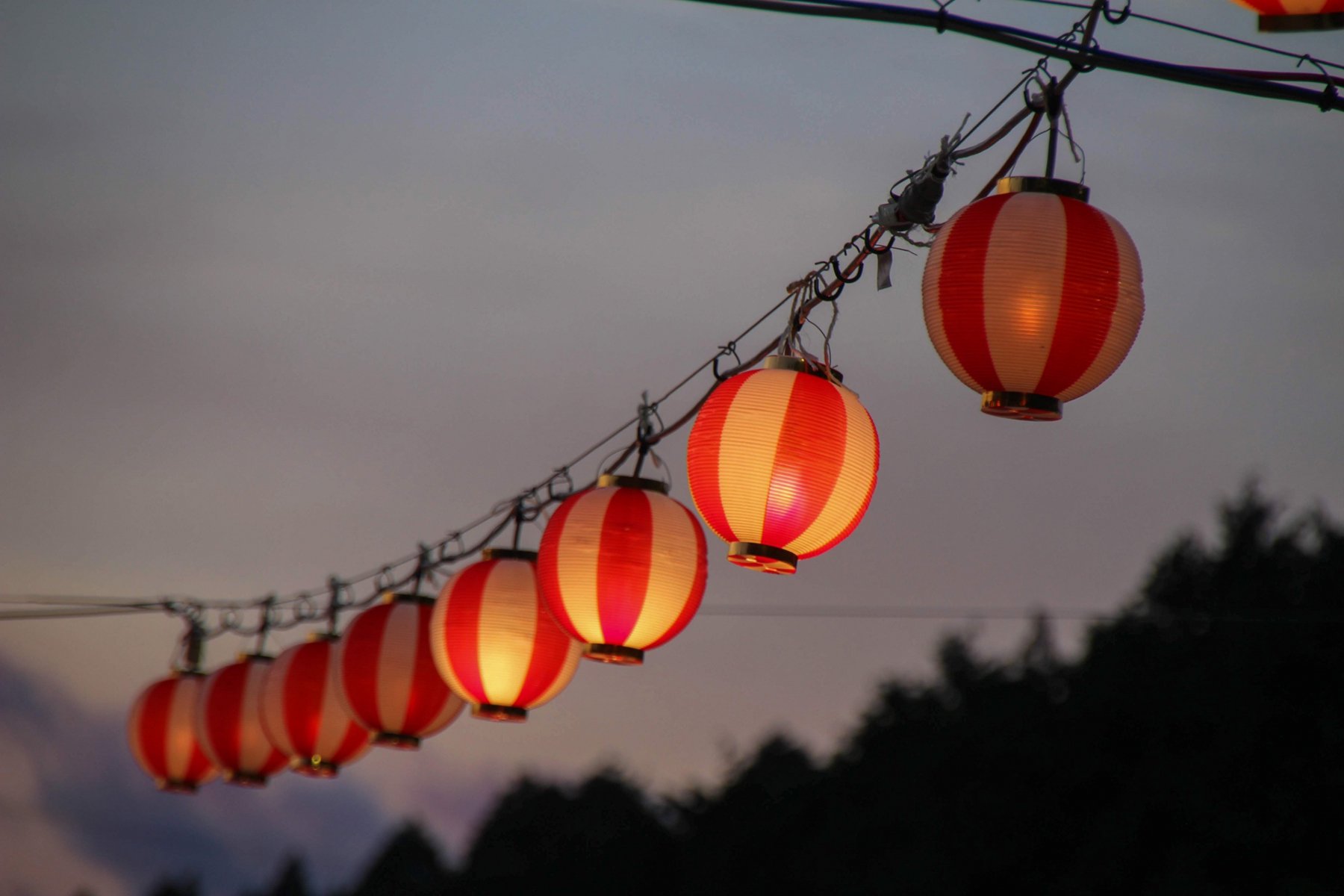
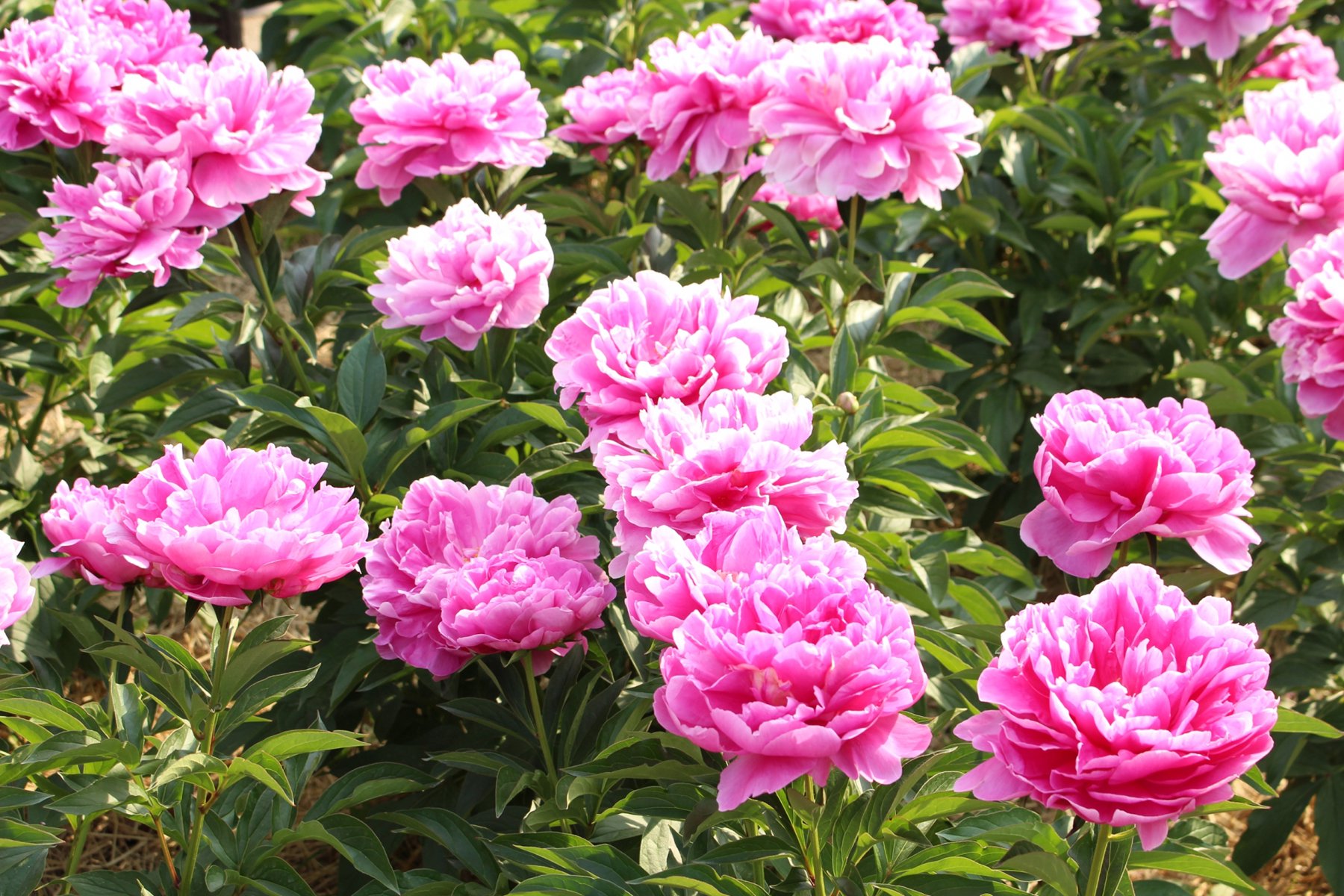
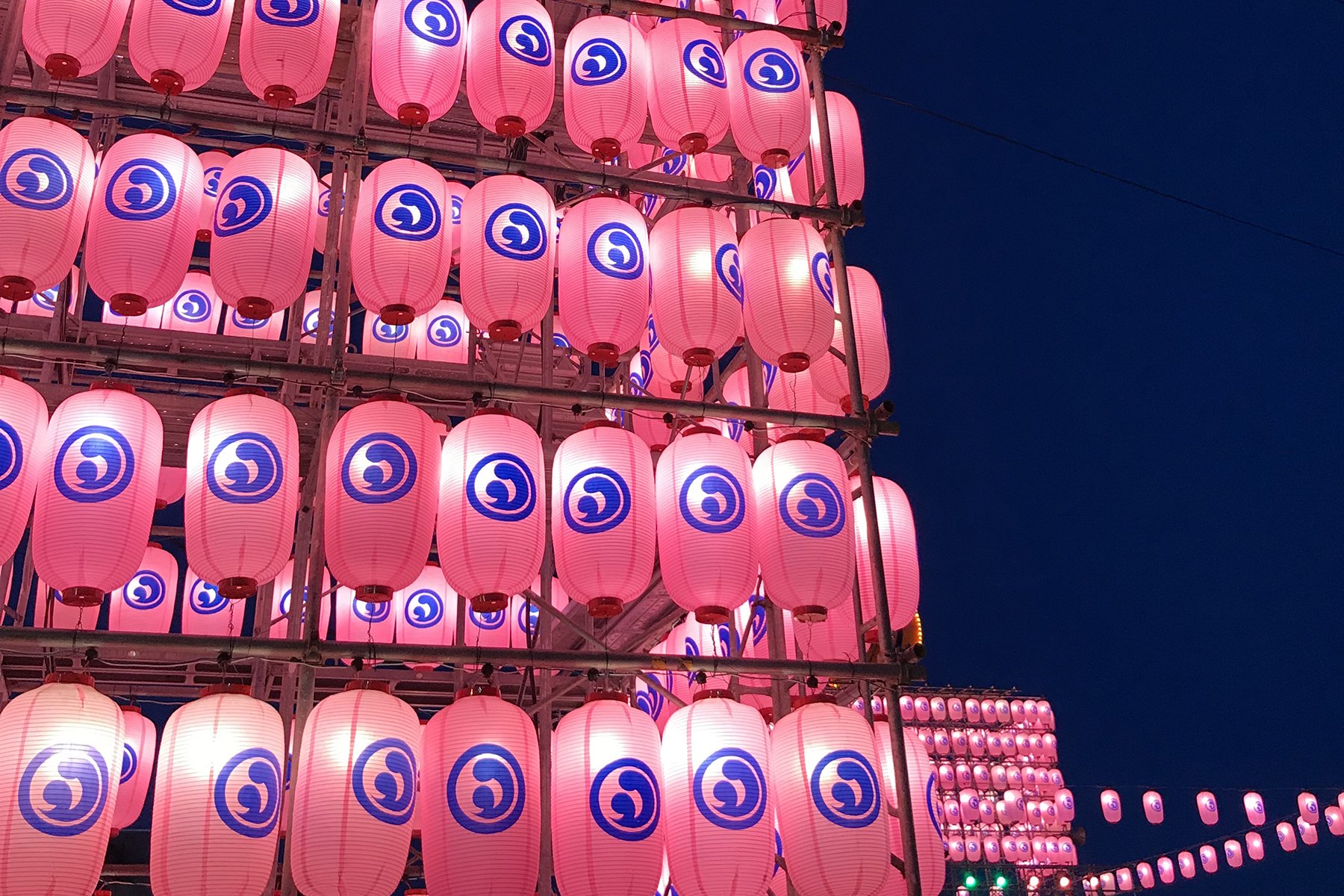


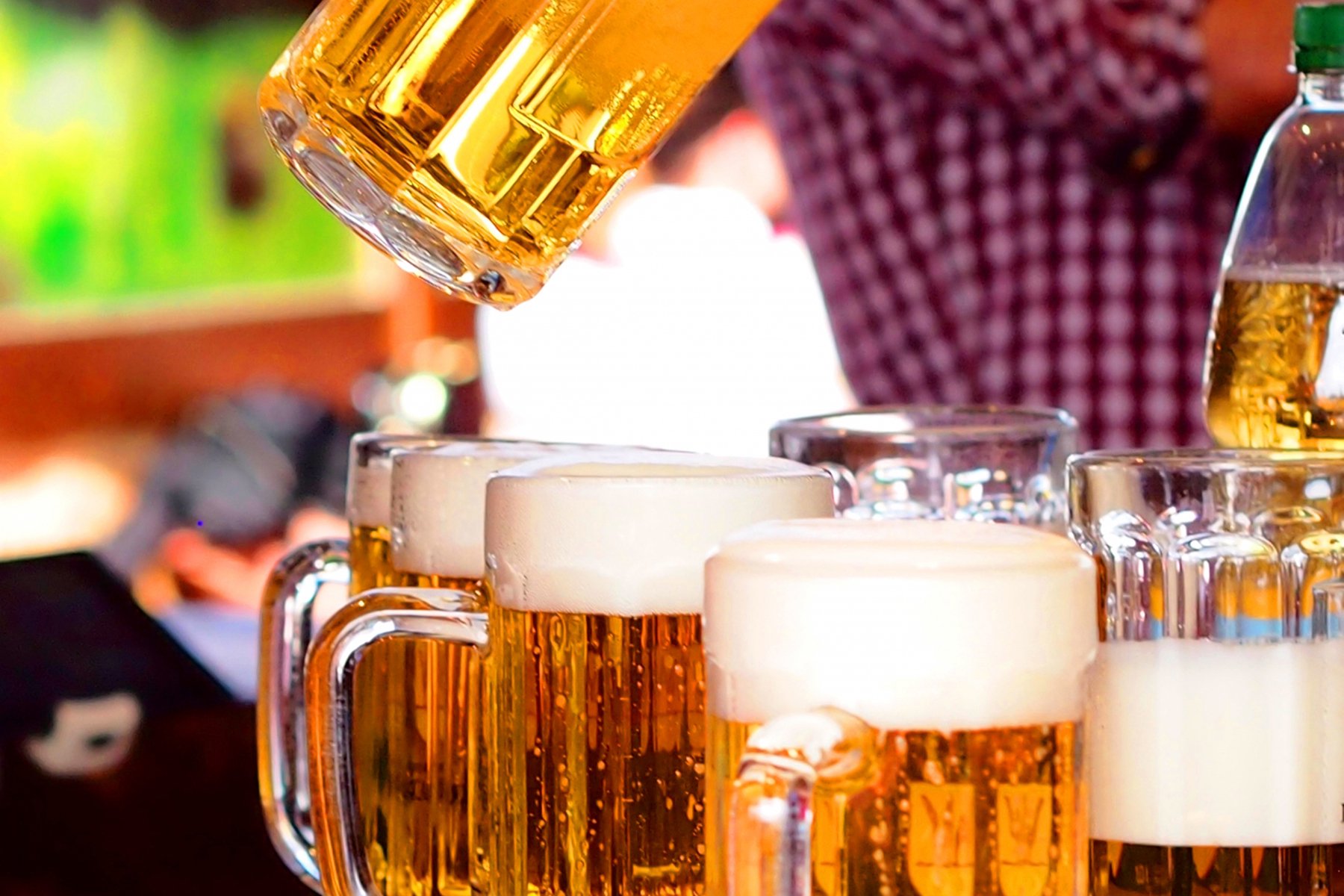
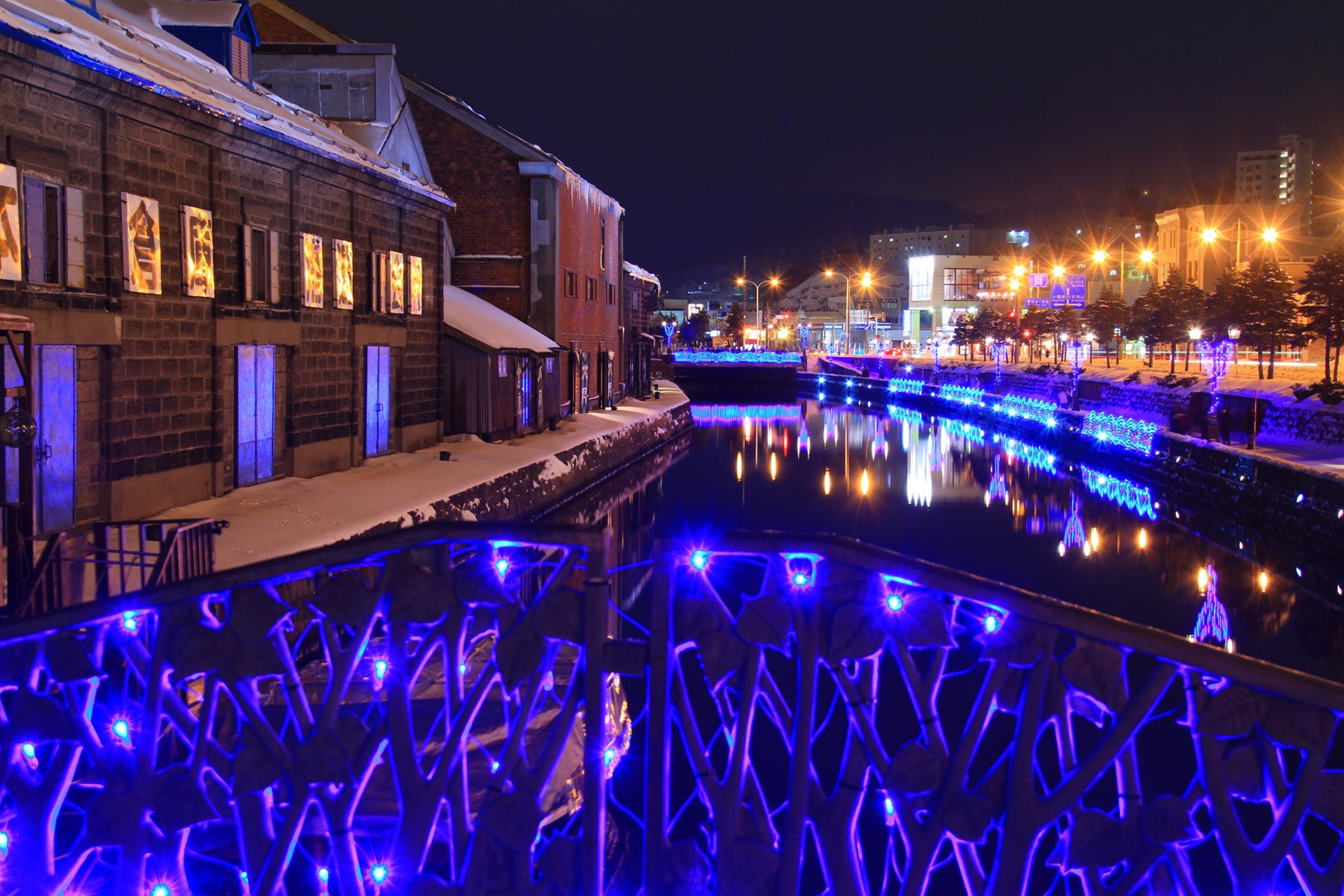

About Otaru City
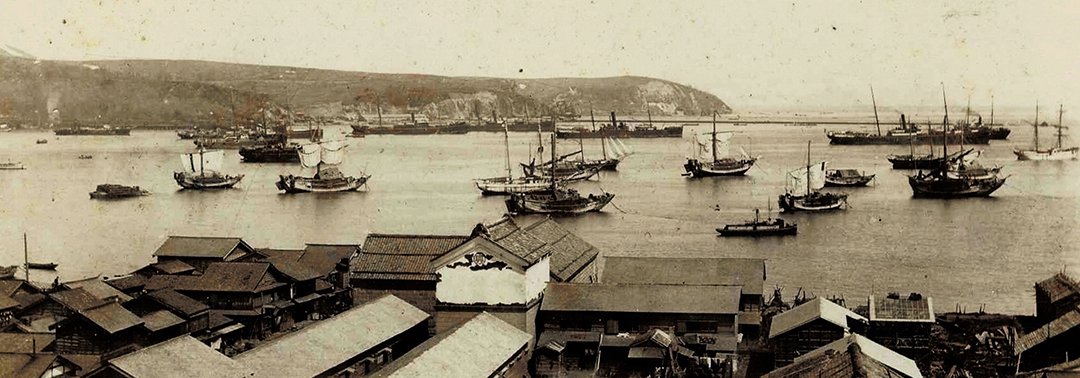
In the Meiji Era, the new Japanese government decided to make Sapporo the base for Hokkaido development. At a time when overland routes had not yet been developed, the port of Otaru was constructed as a supply base for goods brought in by sea. In order to store and keep the goods brought in from the port, wooden and stone warehouses were built one after another along the seafront. In 1880, Hokkaido's first railroad, the government-run Horonai Railroad, was built, and Otaru became a port for transporting the energy and coal that supported Japan's modernization.
Meanwhile, the herring fishing season was at its peak, and many migrant fishermen from Honshu came to Otaru. Immigrants from all over the country also flocked to Otaru, and the town became a melting pot of local cultures and customs. In the late Meiji period (1868-1912), the development of the harbor reached its peak and Otaru grew rapidly as one of the leading economic and port cities in Japan. The "Former Otaru Branch of NYK Line" and the "Former Otaru Branch of the Bank of Japan", both of which are now nationally important cultural properties, are representative examples.
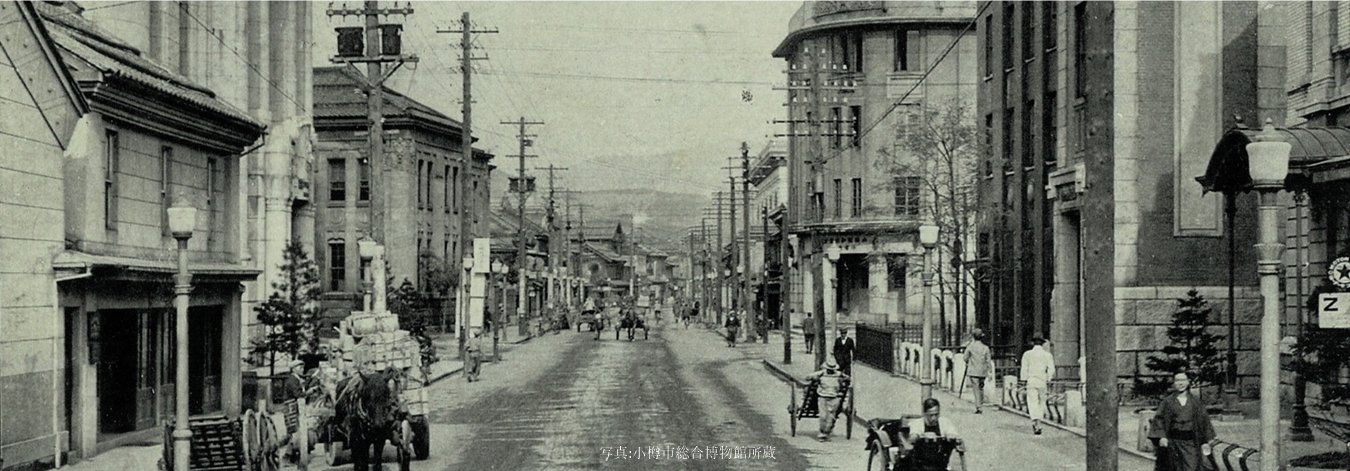
Otaru's boom continued into the Taisho era (1912-1926). The prosperity of Otaru can be seen in the many banks that still remain in Otaru as historical buildings. During this period, in order to improve the efficiency of "barge loading and unloading," the process of transferring cargo from large ships anchored off the harbor to warehouses, the coast was reclaimed and a canal was constructed. This was the birth of the Otaru Canal.
According to the first national census conducted in 1920, Otaru had the 13th largest population in Japan. In order to increase the population and foster the development of commerce, a local businessman invested his own money to invite a higher commercial school (now Otaru University of Commerce) to Otaru, and the city also began to mature as a cultural city.
Even after entering the Showa period, the economy continued to boom until around 1935. The prewar Showa Depression did not have a major impact on Otaru's economy, as the city's economic zone encompassed Hokkaido and Sakhalin Island as a supply base for food and raw materials.
After the end of World War II, Otaru seemed to have regained its prewar prosperity as a base port for reconstruction, but in the 1950s, the momentum of Otaru Port stalled due to a decline in demand for coal caused by a change in energy policy and changes in the port cargo situation. In the late 1950s, banks, trading companies, and trading companies that had head offices and branches in the downtown area began to withdraw one after another. Losing its major industries, Otaru became a "city in decline.
Under such circumstances, the "Canal Preservation Movement" arose over the reclamation of the Otaru Canal, which had lost its original role. This citizen-led movement to give new value to an old and worthless object was picked up by the news and became nationally famous. Today, Otaru is one of the most popular tourist cities in Hokkaido, attracting 8 million visitors annually, and the Otaru Canal has become an indispensable symbol of the city.
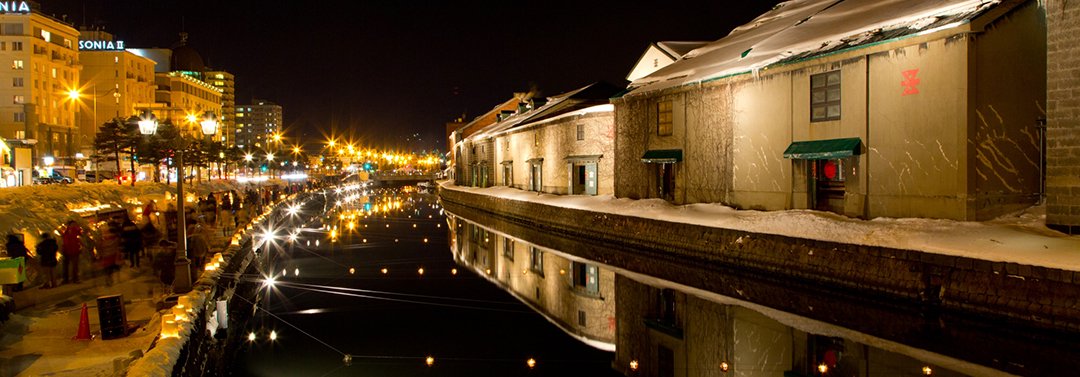
Around the Otaru Canal, which is crowded with tourists, stone warehouses and historical buildings create a nostalgic atmosphere. At night, some of the historical buildings are illuminated, creating a relaxing and romantic atmosphere.
�ڡ�Population����
110,410 (as of December 31, 2021)
�ڡ�Area����
243.83 square km
�ڡ�Town Size Ranking in Hokkaido����
120th place
�ڡ�Access����
From Sapporo: about 39 km (about 50 minutes by car)


